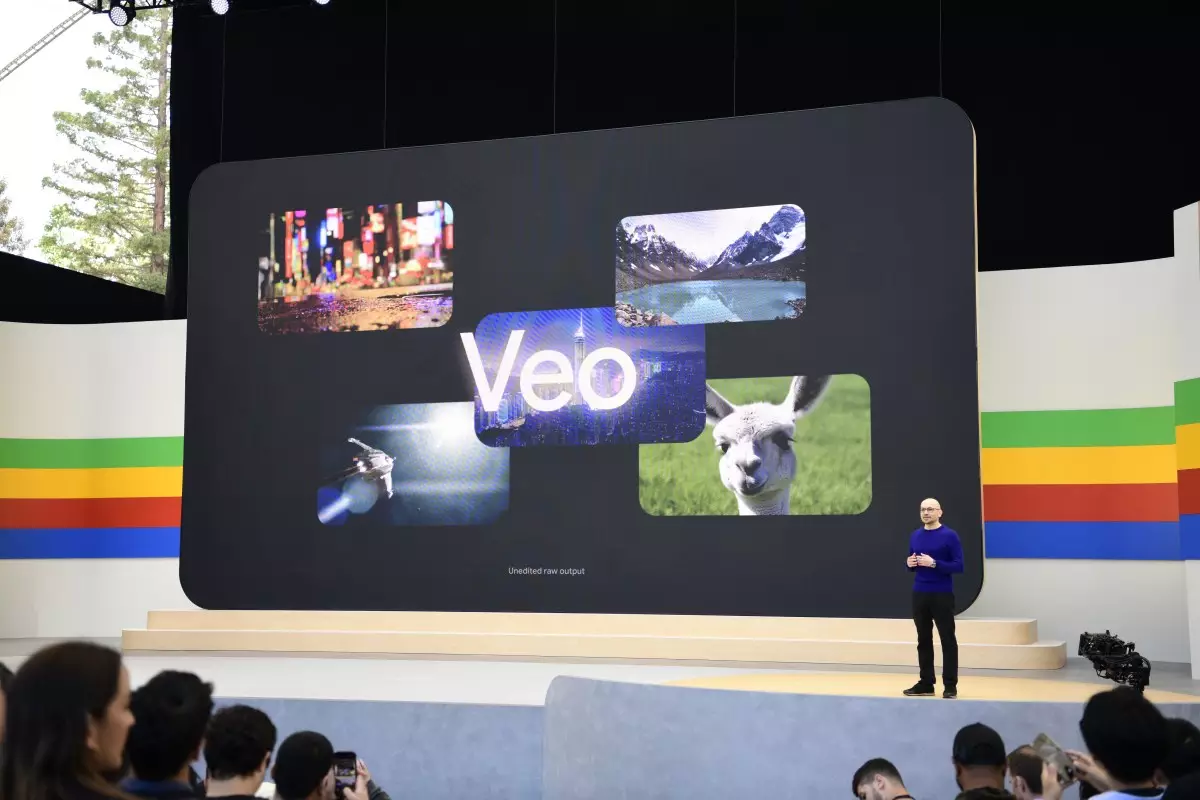Artificial intelligence continues to redefine the boundaries of technological innovation, especially within the realm of digital entertainment. Google’s recent hints about leveraging its advanced AI models, like Veo 3 and Genie, in the context of video games, signals a paradigm shift in how we conceive simulated worlds. While the conversation started playfully, it unveils a serious potential that could vastly enhance the depth, realism, and immersion of future interactive experiences. This intersection of AI and gaming isn’t merely about creating visually stunning graphics; it’s about building dynamic, believable environments that react and evolve in real time—something that has the capacity to transform passive entertainment into active, living worlds.
From Video Generation to World Simulation: A Substantial Leap
Veo 3, a cutting-edge video generation model that synthesizes realistic visuals and audio, is an impressive feat, yet its capabilities are fundamentally limited to passive content creation. Its current focus is to generate media that looks and sounds authentic, which, although impressive, doesn’t inherently facilitate interaction or environment manipulation. Conversely, the concept of a “world model” involves simulating the complex, unpredictable dynamics of a real environment—such as physics, strategic interactions, and evolving narratives—which can serve as a foundation for fully interactive gameplay.
The distinction between the two is crucial. Video models, like Veo 3, address content synthesis; world models, on the other hand, are about understanding, predicting, and influencing the world itself. Google’s ambition to evolve its multimodal foundation models toward this goal reflects an understanding that true innovation lies not just in visual fidelity but in creating living, breathing ecosystems within virtual spaces.
Google’s Vision and the Broader Competitive Landscape
The hints dropped by Google’s leadership—suggesting the possibility of playable environments—highlight an emerging trend: tech giants see a future where AI enables players to not just consume content but actively shape and explore dynamic virtual worlds. This vision aligns with ongoing developments at DeepMind, which unveiled Genie 2, a model designed to generate endlessly varied playable environments. Such advancements suggest that the goal is no longer just about content creation but about creating adaptable systems capable of simulating complex phenomena.
Other industry leaders, including Fei-Fei Li’s World Labs, are undertaking similar pursuits, emphasizing the potential of AI to generate complex 3D worlds from minimal input. These efforts converge on a shared vision—using AI to lower the barriers of content creation, reduce production costs, and craft more personalized, immersive experiences. Google’s involvement could catalyze the integration of these technologies into mainstream gaming, introducing an era where characters, environments, and narratives are generated on-the-fly with unprecedented coherence.
The Challenges and Opportunities of Building Living Virtual Worlds
Despite these promising developments, several hurdles remain before AI-driven world models can become mainstream tools for game developers. The critical challenge is enabling these models to operate interactively, predictively, and with real-time responsiveness. Current models like Veo 3 excel at passive media generation, but enabling them to become active simulators that can respond to user inputs dynamically—akin to a real-world environment—is a monumental task.
However, the potential rewards justify the effort. Imagine a game where environments evolve based on player actions, where NPCs display believable behaviors, and narratives shift fluidly without predefined scripts. This level of sophistication would create a more authentic, engaging, and personalized gaming experience, possibly disrupting traditional development pipelines.
Furthermore, AI-driven simulation could extend beyond gaming into education, training, virtual social spaces, and even healthcare. The implications are profound: as AI models develop more predictive and interactive capabilities, the line between reality and virtuality blurs, prompting us to rethink what digital worlds can be.
Looking Ahead: A Future of Infinite Possibilities
While the road to fully realized AI-driven virtual worlds is complex, the trajectory is unmistakable. Google’s playful comments about Veo 3’s potential in gaming hint at a future where AI is no longer just a tool for content creation but a fundamental infrastructure for immersive simulation. Whether through hybrid approaches that combine passive video models with active simulation engines or through entirely new architectures, the push towards intelligent, adaptable virtual environments is inevitable.
In this rapidly evolving landscape, innovation will be driven by a mix of technological breakthroughs, creative ambition, and competitive endeavor. Ultimately, the companies that succeed will be those willing to invest in marrying AI’s generative prowess with real-time, interactive systems—crafting worlds that are not only beautiful but also alive, unpredictable, and deeply engaging. As AI continues to advance, a new era of digital experience—limitless in scope and rich in realism—will reshape the way we game, learn, and connect.

